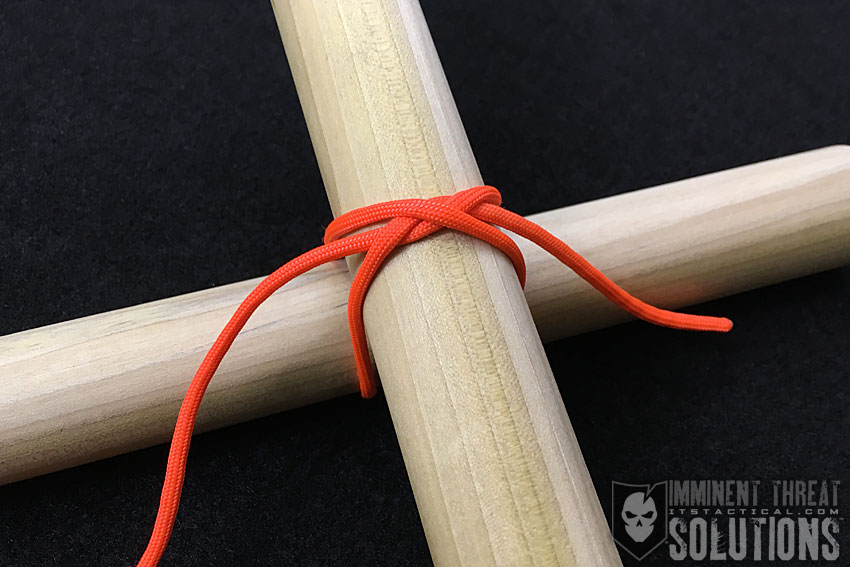
On today’s Knot of the Week I’ll be highlighting the Transom Knot, which is not only a great way to seize objects at right angles to one another, but a great alternative to starting many of the lashings we’ve gone over in the past. It’s similar to the Constrictor Knot, but isn’t as strong or secure.
A common issue that I talk about when starting a lashing with a Clove Hitch or a Timber Hitch is that if you’re not using natural fiber rope and rough wooden spars, you can have issues with the cordage gripping. Particularly in the case of dowel rods lashed with paracord, as shown for demonstration purposes here and in other lashings.
The Transom Knot is a great replacement for the Clove Hitch or Timber Hitch in a lashing and will hopefully answer the question many have asked about this particular subject. Other uses for the Transom Knot include lashing an object to a vehicle roof rack or tying off a creeping vine to a garden trellis.
Transom Lashing » Lashings
(Strength: 3/Secure: 3/Stability: 3/Difficulty: 3) See below for what these ratings mean.
Ratings
Strength/Security/Stability/Difficulty
Each knot will be assigned a rating from 1-5 (1 representing the lowest score) based on the following four properties:
Strength – All knots will weaken the strength of a rope, however, there are knots that are stronger than others. The scale here will reflect how strong the rope remains with the specified knot.
Security – The security scale refers to how well the knot will stay tied, and resist coming loose under a normal load.
Stability – Stability refers to how easily the knot will come untied under an abnormal load (i.e. the knot being pulled in a direction it was not intended to) A lower score here represents instability.
Difficulty – The lower the number, the easier a knot is to tie.